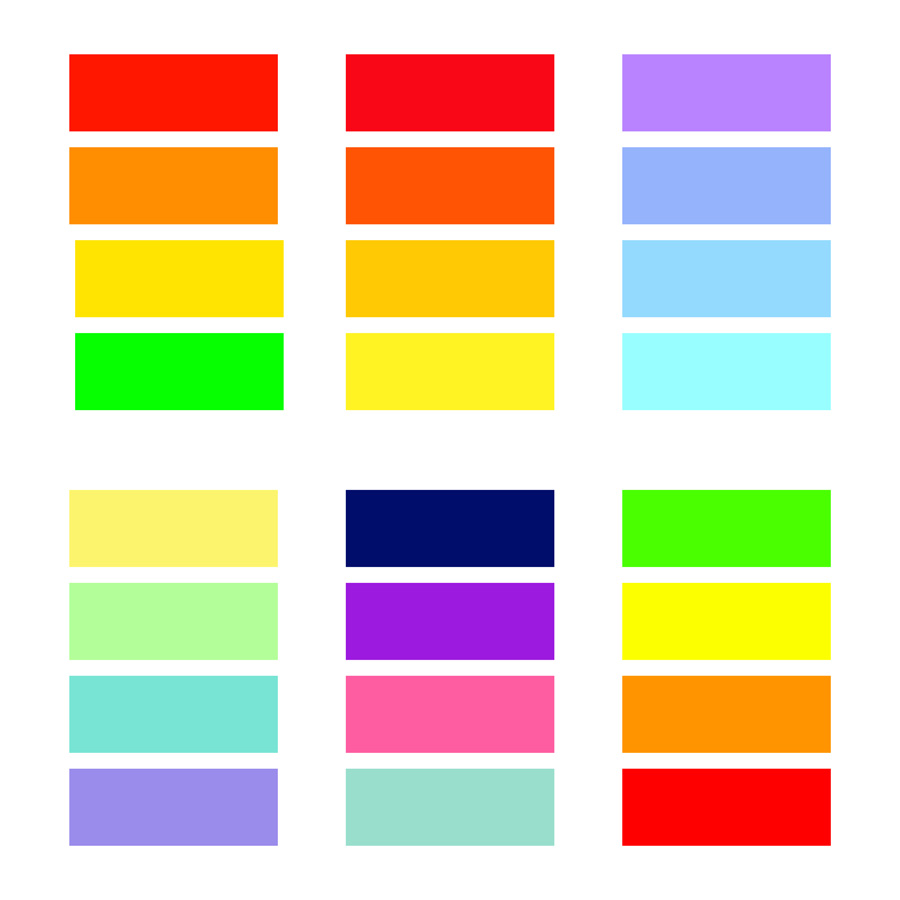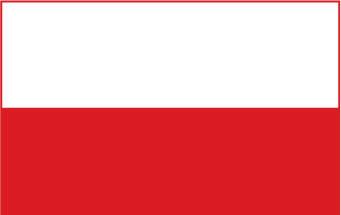Your cart is currently empty!
The Meaning of Colors
Colors play a fundamental role in brand perception, evoking emotions, building associations, and influencing purchasing decisions. Choosing the right colors is not random, as each hue communicates something unique, shaping how your brand is perceived. Below is an in-depth look at the meaning of different colors and their applications in branding.

1. Red – Energy and Urgency
- Symbolism:
- Energy, passion, love, courage.
- Urgency and calls-to-action.
- Impression: Red grabs attention, evokes emotions, and stimulates activity. It’s an intense color that can create both positive associations and a sense of tension.
- Applications:
- Promotions, sales, and time-limited offers.
- Food-related industries (red stimulates appetite).
- Brands looking to spark strong emotions or urgency (e.g., Coca-Cola, Netflix).
2. Blue – Trust and Calmness
- Symbolism:
- Trust, stability, professionalism, loyalty.
- Calmness, relaxation, purity.
- Impression: Blue is often associated with safety and tranquility. It’s a universal color that works well in corporate and tech communications.
- Applications:
- Finance, tech, and healthcare industries.
- Building a professional brand image (e.g., Facebook, IBM).
3. Green – Nature and Health
- Symbolism:
- Nature, ecology, harmony, freshness.
- Health, growth, balance.
- Impression: Green evokes renewal and life. It is commonly used to promote eco-friendly, health, and wellness products.
- Applications:
- Eco-friendly, agricultural, health, and cosmetic brands.
- Products promoting balance, calmness, and environmental consciousness (e.g., Starbucks, Animal Planet).
4. Yellow – Optimism and Creativity
- Symbolism:
- Happiness, optimism, energy, youthfulness.
- Creativity and modernity.
- Impression: Yellow captures attention and creates positive associations, but too much of it can be overwhelming.
- Applications:
- Products for children, youth-focused promotions, and brands emphasizing joy and innovation (e.g., McDonald’s, Ikea).
5. Orange – Energy and Fun
- Symbolism:
- Excitement, enthusiasm, adventure.
- Warmth, affordability, spontaneity.
- Impression: Orange energizes and fosters creativity, offering a less intense alternative to red.
- Applications:
- Lifestyle, sports, and entertainment brands.
- Promotions encouraging spontaneous purchases (e.g., Nickelodeon, Fanta).
6. Purple – Luxury and Mystery
- Symbolism:
- Luxury, elegance, wealth.
- Creativity, spirituality, mystery.
- Impression: Purple conveys prestige and sophistication, while lighter shades are popular in the beauty industry.
- Applications:
- Premium industries, luxury and creative products (e.g., Cadbury, Yahoo).
7. Black – Elegance and Power
- Symbolism:
- Power, elegance, sophistication.
- Mystery, formality, timelessness.
- Impression: Black is classic and imparts a refined and professional brand image.
- Applications:
- Luxury and exclusive brands (e.g., Chanel, Nike).
- Premium and minimalist products.
8. White – Simplicity and Purity
- Symbolism:
- Purity, innocence, minimalism.
- Clarity, modernity.
- Impression: White evokes a sense of lightness and spaciousness. It’s commonly used in tech and healthcare branding.
- Applications:
- High-tech, medical, and cosmetic products.
- Minimalist designs focused on simplicity.
9. Brown – Stability and Naturalness
- Symbolism:
- Earth, stability, simplicity.
- Authenticity, tradition.
- Impression: Brown conveys warmth and durability. It is especially effective in communication related to nature and craftsmanship.
- Applications:
- Eco-friendly, organic, and food products (e.g., Hershey’s).
10. Gray – Neutrality and Professionalism
- Symbolism:
- Neutrality, compromise, balance.
- Elegance, modernity, restraint.
- Impression: Gray is a versatile color that works well in both sophisticated and neutral business presentations.
- Applications:
- Tech, business, and industrial sectors.
- Brands aiming to appear professional and reliable.
Summary
Each color carries specific meanings and emotions. When choosing a color palette for your brand, consider its personality, target audience, and industry specifics. Properly applied colors can significantly influence brand perception, build its identity, and increase customer engagement.


Leave a Reply